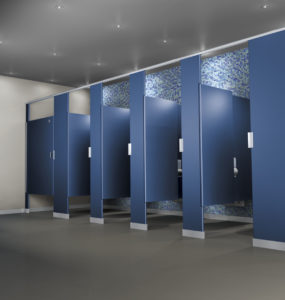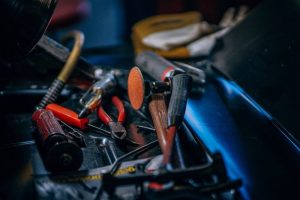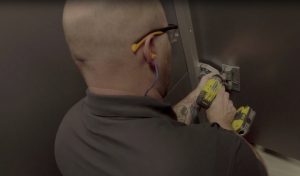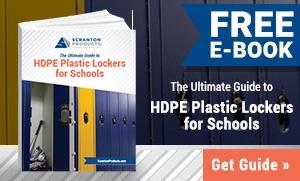Operational costs can significantly impact the budget for any type of facility but especially for sports stadiums. Frequent heavy use by fans and visitors takes a particularly heavy toll on the restrooms.
However, that doesn’t mean there aren’t ways for administrators to keep the cost of both short- and long-term maintenance low. In fact, reducing restroom maintenance costs is simple when planned properly.
Understanding the Trouble Areas
To learn how to reduce the costs of restroom maintenance, it might be best to first understand where most building officials are spending more on maintenance costs. Primarily this is in the repair and replacement of bathroom partitions. The partition, or stall, typically houses a toilet and features a locking door.
The majority of commercial bathrooms features partitions made from steel. This is due partly because steel is easy to manufacture and therefore provides a lower upfront cost to contractors and architects. However, steel needs proper routine maintenance to continue looking and functioning properly.
One major problem that steel has is rust. Rust occurs when metal is subject to oxygen and moisture. With excited sports fans spilling drinks and frantically washing their hands to get back to the big game, it’s not a question of if steel partitions will rust but when.
Another common problem with metal bathroom partitions is denting. The metal panels aren’t solid steel but instead thinner sheets attached to a frame. These thin sheets are easily damaged when treated carelessly. Their smooth surface also creates a perfect area for graffiti or scratching, which can be an eyesore to an otherwise stylish restroom.
To help administrators cut the costs of routine maintenance, they need to consider alternatives to the materials they’re using.
Lowering Maintenance Costs with HDPE
HDPE, or high-density polyethylene, is a type of plastic that can be manufactured into bathroom partitions. This material can also significantly reduce the cost of routine maintenance in stadium restrooms in several ways, the first being its resistance to rust.
It’s also resistant to dents and scratches. Plus designers can choose HDPE partitions in a variety of colors and designs to match the theme of any stadium. They can even be made to resemble the look of traditional steel without the negative drawbacks.
Not only is HDPE resistant to rust, dents, scratches, and corrosion, but it’s also easily washable. Cleaning staff can even use a power washer to clean HDPE partitions, helping to make cleaning the restrooms more efficient.
This is how stadiums with HDPE partitions can spend less on replacing or repairing their restroom partitions and less on cleaning the restrooms as well.
Want to know more about how HDPE bathroom partitions can help to reduce the cost of restroom maintenance in your stadium? Contact Scranton Products today or read our Ameritrade Stadium Case Study to see how this facility reduced their maintenance costs through HDPE bathroom partitions.



 functioning at its best. Look for any components that may need a replacement, so you can take care of it during the break. Any type of issue that can prevent your school from being heated may actually prolong winter break, so be sure to
functioning at its best. Look for any components that may need a replacement, so you can take care of it during the break. Any type of issue that can prevent your school from being heated may actually prolong winter break, so be sure to  The doors and fixed panels used in the Eclipse partition system provide both high design and privacy. Here we show how to ensure proper gapping and consistency on all panels and doors in order to achieve the desired sleek lines.
The doors and fixed panels used in the Eclipse partition system provide both high design and privacy. Here we show how to ensure proper gapping and consistency on all panels and doors in order to achieve the desired sleek lines.

